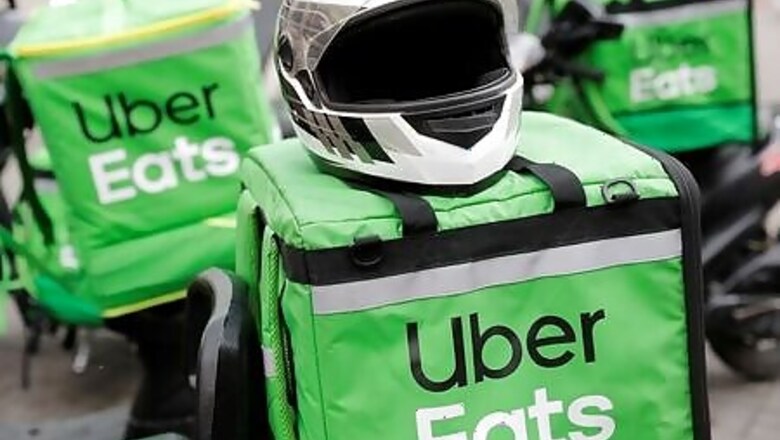
views
Uber Technologies Inc said demand for its food-delivery service more than doubled in the second quarter as many users remained largely homebound, while demand for ride-hailing trips was only marginally recovering from pandemic rock-bottom.
The company said that despite those larger challenges it is sticking to its goal of being profitable on an adjusted basis before the end of 2021 thanks to stringent cost-cutting measures and a strong balance sheet. Uber recorded an adjusted loss in earnings before interest, taxes, depreciation and amortization of $837 million (636 million pounds) in the second quarter.
Shares were down 2.9% at $33.72 in after-hours trading. The stock had risen 4.5% in the regular session.
Ride-hailing trips, in the past responsible for nearly two-thirds of Uber’s revenue, increased 5 percentage points from their low in April, but gross bookings remained down 75% from last year.
Uber’s chief executive officer, Dara Khosrowshahi, told analysts on a conference call on Thursday that rides recovery depended on the ability of different countries to contain the virus, with the recovery so far led by Asia, excluding India.
In Hong Kong and New Zealand, rides bookings at times exceeded pre-COVID-19 levels, while trip requests in Germany, France and Spain have improved to just a 35% decline from a year ago.
“Our global geographic footprint remains a huge advantage,” Khosrowshahi said.
Uber Chief Financial Officer Nelson Chai said the company’s profitability timeline in 2021 depended on the ability to combat the virus, with the situation in the United States becoming “murkier, not clearer” over the past few weeks.
The company on Thursday posted a $1.8 billion net loss in the months from April to June, including charges related to the laying off of 23% of its global workforce during a period when infections of the novel coronavirus continued to spread in the United States, Uber’s largest market.
The number of active platform users across the 69 countries in which Uber operates nearly halved year-over-year, from 99 million to 55 million.
Uber’s second-quarter revenue fell 29% to $2.24 billion from the year prior, beating analysts’ average estimate of $2.18 billion, according to IBES data from Refinitiv.
Revenue at Uber Eats doubled to $1.2 billion, boosted by greater demand for delivery as Americans largely continue to stay home. Uber last month expanded its delivery reach by announcing the acquisition of Postmates Inc for $2.65 billion to expand the business of supplying everyday goods.
Uber’s ride-hailing segment remained battered by the coronavirus crisis, with revenue from the United States and Canada, its largest market, declining $1.25 billion. Nevertheless, ride-hailing was the only segment generating an adjusted EBITDA profit, of $50 million.
Uber Eats, whose gross bookings more than doubled, continued its loss-making streak but narrowed losses, recording a $232 million adjusted EBITDA loss in the second quarter. CFO Chai said Uber expected losses in the third quarter to be roughly the same.
He also told analysts that Uber’s food-delivery business would be profitable in the vast majority of countries in which it operates within a couple years.
Disclaimer: This post has been auto-published from an agency feed without any modifications to the text and has not been reviewed by an editor




















Comments
0 comment